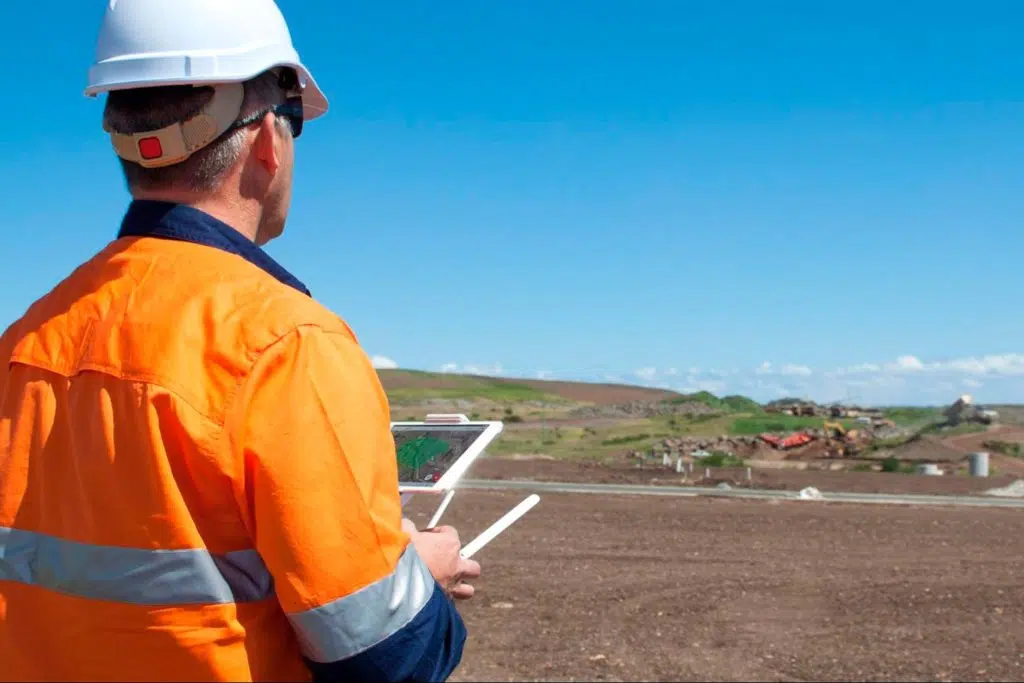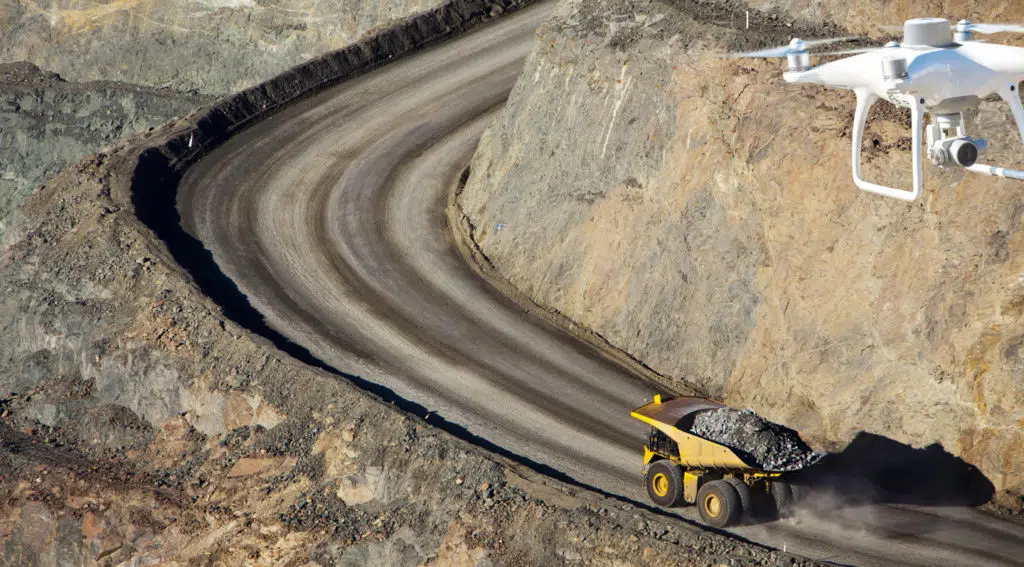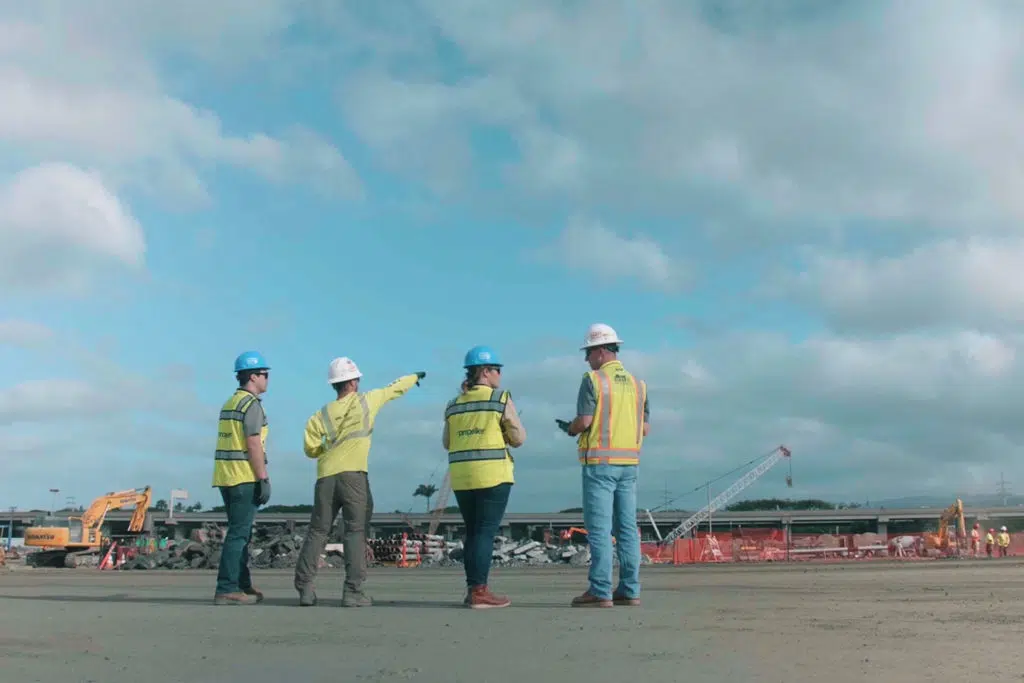Who benefits from drone survey data?
In recent years, drone surveying has transformed how sitework progress is mapped, measured, and managed. Once the data is processed into a 3D map, the map can be used to calculate volume, area, and elevation and compare those measurements against different surfaces—surveys, designs, and more. But, the map is more than measurements; it’s a project meeting ground. Project team members from a variety of departments across the company and external stakeholders can use these maps and data to do their work and collaborate with others.
And it’s not just for the technical folks, like surveyors and engineers. In this post, we’ll show you who these teams are and how they use this 3D map-based data.

Estimators
Bid more accurately
Project estimators have a tricky job because they must walk a fine line between correctly estimating the costs necessary to complete a job per the design, but not bidding too high that they’re easily undercut by the competition. Missed load counts, volume calculation errors, or elevation miscalculations can lead to inaccurate estimates. So, getting all of the facts straight is key. Digital survey data can help estimators:
- Correctly estimate the project size and scale
- Build models including cut/fill analysis and precisely measure elevations
- Quickly calculate worksite length, area, and volume
- Overlay designs against real-world data
- Review past bids to eliminate future mistakes
Supervisors
Consistently hit production targets
With data obtained from frequent drone surveys, it’s easier for site foremen and superintendents to achieve daily production goals, and even improve processes. With the extra time they gain by having accurate data at their fingertips on their mobile devices, the more time they can spend making the big-picture decisions that affect the project team’s output. Here are few of the benefits of 3D survey maps for this group:
- Quicker decision-making with data-driven insights
- Improved team communication and collaboration
- More accurate cut/fill elevations and design conformance checks
- Better coordinated daily site activities to optimize labor

Project managers
Keep projects on track
Project managers need precise data to interpret what’s happening on the worksite and then make accurate decisions. Without it, the project will fall behind. They need a digital 3D map that helps them make these decisions, minimize mistakes, and avoid rework. With a drone survey processing tool, project managers can:
- Save time on data collection and analytics
- Assess cut/fill progress without waiting for the survey manager
- Make quick, data-based decisions to keep production moving and minimize rework
- Easily share updated info with other project stakeholders, including customers
Environmental and safety teams
Ensure compliance with regulations and keep workers safer
Environmental teams make sure that regulations and sustainable practices are followed as site work progresses. These can include following government-mandated designs, ensuring protection of vegetation and wildlife, and addressing air pollution concerns. Safety teams can use the maps acquired by drone surveying to spot hazards and make corrections to keep workers out of harm’s way. Other benefits include:
- Proactively addressing impact on natural resources (e.g., wildlife migration corridors, natural drainage features, protected forests, etc.)
- Identifying potential issues from the current topography
- Improving overall site safety by monitoring haul routes

Business owners
Stay ahead of the competition and increase margins
Business owners can grow productivity and revenue by using map-based data that’s easy to understand. Since everyone is on the same page, communication and collaboration across the business is seamless. This helps keep projects on budget and prevents rework or downtime, creating more efficient teams and optimizing company ROI. Efficient business operations help build reputation and attract new customers.
External stakeholders
Be confident work is progressing according to plan
As discussed, access to near real time information about the worksite improves business efficiency. This provides project certainty for clients, who also benefit from having access to this map-based data. Businesses can show their external stakeholders what’s changed on site from month to month, which ensures smoother discussions and eliminates, or at least greatly reduces, any differences of opinion. Since the 3D model is very easy for clients to follow, it aids in collaboration and strengthens trust within the contractor/client relationship.
Bringing it all together, the map-based workflow you get from a solution like Propeller makes it simple for all project stakeholders to view the site from different perspectives and make more informed decisions, based on highly accurate data. It’s delivered in a way that everyone can use to complete their specific tasks and responsibilities for the project, keeping the worksite connected at all times.




